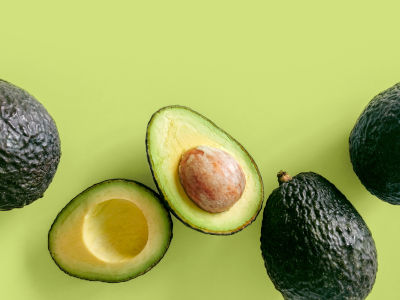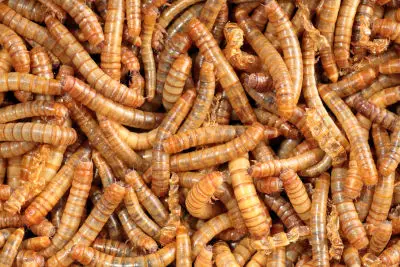Green Anole Breeding (Best Tricks plus Pictures)
Keeping Green Anoles (Click to see why these are 7 best Anole Substrates) is one thing, but breeding them is another. I was interested in how other successful breeders have done it. So I have compiled my research on this for you today.
How do you breed Green Anoles in captivity? You need to have a maximum of one male in the enclosure, to stop any fighting, and provide a few females. Provide the best housing, including temperature, water and humidity. Also the right number of live plants that have been misted to provide necessary water droplets.
| Are these foods dangerous for your Beardie? | |
| Avacado? Click here to learn, from this guide, if this food is dangerous |  |
| Superworms? Click here to learn, from this guide, if this food is dangerous |  |
Unfortunately many people feel that they just need to have a male and female in an enclosure and “the magic” will happen. Unfortunately that is rarely the case. To be a successful Green Anole breeder you need to have a firm grasp of the basic requirements for it to work. So, let me provide this info for you now.
What is a green anole?
Today's #CityNatureChallenge2018 Observation of the Day is this male Green #Anole #lizard, seen in #Texas by miscelaineous! https://t.co/NxENJTfIYI
The colored flap of skin being extended from his throat is called a #dewlap, which males use for communication. #citizenscience pic.twitter.com/AjzzHlDE5S
— iNaturalist (@inaturalist) April 28, 2018
I’m going to start off by giving you a bit of background about the Green Anole, where its from, scientific name, etc, before before we get into the breeding detail below.
The green anole is a bright green specie of the Anolis Genus. Its scientific name is Anolis Carolinensis and it is from the Southern region of the United States.
It has been quite popular as a pet since the 1950s and is a really great starter pet for a beginner Lizard keeper.
Can you legally keep or Breed a Green Anole?
Before you rush out and purchase one or even consider breeding, you need to check if you are allowed to own one legally in your state. This is mainly applicable to people living in the United States, in particular, the state of Georgia.
Georgia, for example, have certain permits that are required for certain lizards. So check this out first, before you go any further.
What do you need to properly breed them?
Now I’m going to discuss what is required to breed a green anole successfully. Such as housing, etc.
First and foremost, you need to understand that the actual season of breeding is between April and September.
However, this breeding window is not the only factor that you need to consider to successfully breed.
Why People Struggle to Breed Anoles
One of the reasons why people struggle to breed them is because they do not understand the full requirements. Providing a few crickets and roaches and stuffing them in a cramped enclosure is not the recipe for successful breeding.
I you do not get all of their requirements right, they will not breed at all. It’s just a natural bodily function, to remove an unnecessary bodily task such as breeding for survival.
What housing would you need to breed?
First and foremost you need the correct housing, a normal 20 gallon tank will not be enough. Reason being you need a really tall tank. This is for a few reasons, firstly they like to climb.
But mainly, the male Anole will want to use the upper portion of the tank to create a territory. This second level is also used to have live plants for humidity and water distribution.
You need to spray water (also known as “mist”) on them, so it drips down on to the ground floor level. As it falls, droplets are formed, which the Green Anoles use to drink and keep hydrated (they do not like unnatural water dishes).
These plants need to be sprayed a couple of times for the best results.Also, once you have hatchlings (more on this later) they will also need these necessary droplets.
Optimal Humidity, Temperature & Lighting for breeding
Now let’s talk about the temperature, lighting and humidity that is required to breed. Firstly, you will need to provide at least 12 hours of lighting every day.
The temperature needs to remain at roughly 80 degrees Fahrenheit. It needs to stay quite humid but also have a kind of airy atmosphere, not too stuffy, are you with me?
Mixing/Sharing
The maximum amount of males that you want to have in the enclosure is just one. Don’t worry though, one male can comfortably keep up to 5 females happy, and breeding is not a concern.
Be warned, if you do put more than one male in there, you will find that they will fight and cause problems. They are quite territorial and the first thing that the males will want to do is establish his own territory.
How Do Green Anoles Breed?
Firstly the male Anole will initiate the process with some vicious head bobbing. This movement, which will attract the female, will also include inflating its impressive dewlap (see image below)
Male green #anole puffing out his throat fan (dewlap) #greenanole #lizard #herp #orlando #florida #nature #wildlife #photography #wildlifephotography #reptile #oaklandnaturepreserve https://t.co/OLdGQePY60 pic.twitter.com/ogVeDsvExj
— Justageekboy (@justageekboy) May 21, 2018
The Magical Dewlap
This dewlap, which reflects the UV light, and is seen as a brilliant Colour by the female, induces ovulation by the female. This includes females that may be carrying sperm from the previous breeding season.
The male will appear to be quite aggressive with the female, but do not worry, this is just the way nature intended. It will grab hold of the female and appear to bite the back of her neck.
This is to bring her into position for breeding. After the mating is completed, the male is done with her. She will have enough sperm in her to last for this mating season, as well as right round to the next season.
However ,each time she needs to lay an egg she will need to be courted by a male and see the display of the dewlap to make it happen.
How long does it take for the female Green anole to lay the eggs?
The female will lay one egg at a time. There will usually be 10 to 12 day period between each egg. In total you may get approximately 10-12 eggs. This breeding season will be from Spring up until late autumn.
Each ovary will essentially be responsible for one egg. Once each egg is laid, it is usually buried in the substrate. A good substrate for this is soil by the way. This is because they will dig and leave it on the surface or into the soil.
Ideally you want to make sure that you’ve got good substrate and plants available. This will give them ample choices where to hide and bury their eggs. Once the eggs are laid you can leave some for natural development and some you may consider putting into incubation.
You can expect them to be hatched within 6 to 8 weeks. This is assuming that they have been incubated correctly at 80 to 85 degrees Fahrenheit.
Incubating the eggs
The incubation needs to done at a controlled temperature, from 80 to 85 degrees Fahrenheit. You can place the incubation container (this can be a simple plastic cup) into the incubator.
In addition to the cup, they will also need to be covered in vermiculite or you can use moist sphagnum moss too.
You can also consider putting them into an appropriate attic at room temperature. Providing it has the right setup.
Caring for hatchlings
Hatchlings are notoriously difficult to rear. This is because they are quite aggressive. They have a natural instinct to attack their offspring. They also have a tendency to get very dehydrated. This is unless you provide the necessary water they need to survive.
As discussed earlier, their water requirements is as follows: Same as the adults, they will not enjoy drinking water from a water dish, so do not waste your time by providing this. Instead as discussed earlier, make sure you have a lot of live plants that are sprayed (mist) daily allowing water droplets to form, which they will drink from.
For food, you need to provide small insects for them. and this could be baby crickets, fruit flies, etc. But you need to make sure that they are well fed, watered and looked after you.
Survival of the hatchlings
When it comes to survival of these hatchlings unfortunately they are under constant threat from birth. This includes other siblings, as discussed earlier. Not just this, also other adult lizards within the same enclosure. They are likely to attack them. Fortunately there are some which go quickly and will be able to survive to become full sized.
Related questions?
What happens if you Green anole is feeling Stressed? If you Anole is feeling stressed, your green Anole may turn brown, This is an indication that they are unhappy and an opportunity for you to fix the problem.
What Happens if your baby Anole is not drinking properly? If your Baby Anole is not drinking properly. You can help them to drink by using a Baby Anole pippette (click for more info on this).